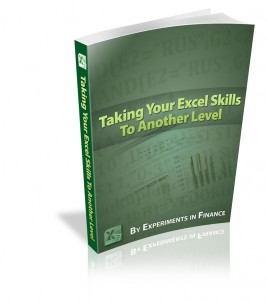This weekend, I finished reading The Money Coach’s Guide to Your First Million by Lynnette Khalfani, a copy of which I received from Khalfani’s publisher. Since I have readers who have asked basic personal finance questions in the past, I thought it might be a good book to review.
Khalfani covers quite a few topics in her book and provides a good introduction to each section. While anyone who’s willing to learn could benefit from reading the book, because Khalfani writes very often about her personal experiences — from going from poor to perfect credit, having gone through a divorce, how her childhood impacted her financial management skills later on, for example — and because she takes the time to address relationship issues, I would especially recommend this book to any women out there who might be daunted by the idea of plunging into learning about personal finance and who prefer a more personal and conversational point of view rather than one that takes a more generalized approach. If you’re interested in learning more about her, she has a website at The Money Coach.
The first chapter on creating a budget is one of the book’s strengths. I think she’s absolutely right in that people tend to avoid creating budgets because “most of us view a budget as drudgery….people believe that the word ‘budget’ is synonymous with the word ‘can’t'”. Khalfani walks through the process of how to create an effective budget and avoid thinking that a budget is nothing but deprivation.
Throughout the book, Khalfani takes a grounded, no-nonsense approach toward her readers, reminding them that if they’re serious about gaining control of their financial lives, they need to be honest with themselves, get disciplined, and do the work that I think should resonante with those who are really looking to learn.
For example, she points out, “Many of you might think you spend a lot of time handling money issues, but you’re really just wasting time by fretting over your situation.” She lists 6Ds that are the quickest way to losing a fortune: divorce, disease, death in the family, disability, disaster, and downsizing. In fact, she recommends readers go to their local courthouse and sit in on some of the proceedings, noting that they’re not the “glamorous” stuff you see on Court TV but very real difficulties that happen to real people, all of which cause significant financial losses.
Here’s a list of the chapters in the book and a very brief summary of each:
- Make a Personal Prosperity Plan: How to create an effective budget and how to write realistic goals
- Invest First, Last, and Always in Your Reputation: Why getting a perfect credit score is important and how to invest in yourself
- Live Like a Lender, Not a Borrower: Gotchas and pitfalls (including people) in your life that you might need to watch out for
- Leverage the Power of Property: Ways to invest in real estate
- Increase Your Fortune with Proven Methods Not Shortcuts: How to invest properly in the stock market
- Overcome Setbacks and Minimize Risks to Your Financial Health: Insurance, insurance, insurance: why you need it, what kinds you need, what kinds to avoid
- Never Forget the Next Generation: Remember, your children learn from your actions and attitudes. What do you want to teach them? And a brief intro to trusts
Personally, I found myself learning the most from the chapters on real estate and insurance, both of which contain her specific recommendations and useful overviews, because my understanding is definitely weak in both of these areas. Her chapter on real estate discusses not only the advantages and disadvantages of buying physical real estate but also REITs, investing in housing tax credits and tax lien certificates, neither of which I’d ever heard of.
What didn’t work as well for me were the acronyms she used (like MILLION, SIMPLE, etc.) in which each letter stood for a specific step in improving your finances. The only one that I can still remember are her 6D’s.
I also found the chapter on investing in stocks too lightweight, though she manages to cover pretty much all of the proven stock purchasing approaches (diversify, think long-term, etc.). And I think many people would have been interested to learn specifics about how she managed to get out of $100K in debt in less than 3 years, but she only makes references to her previous book Zero Debt.
So, if you’re looking for an introductory, conversational book about personal finance and getting on the road to building wealth, give this book a try. It might just be the approach you’re looking for.
***************************************************
Look Good at Work and Become Indispensable Become an Excel Pro and Impress Your Boss

***************************************************



Diversifying into real estate through REIT ETFs. | Experiments in Finance
[…] I was reminded by a chapter of The Money Coach’s Guide to Your First Million that my investment portfolio lacked any exposure to the real estate market. We don’t even own a house, having decided the time is not yet right to buy into the Bay Area. So, earlier this week I decided to look into real estate investment trusts (REITs). […]
moneymonk
I also read that book. I give it 4 stars. This is a very good book to use as a reference to personal finances. I also own a REIT. I do not own Real Estate wxcept for my home. REITs is a great way to get a piece of Real Estate without physically dealing with tenants and rental properties.